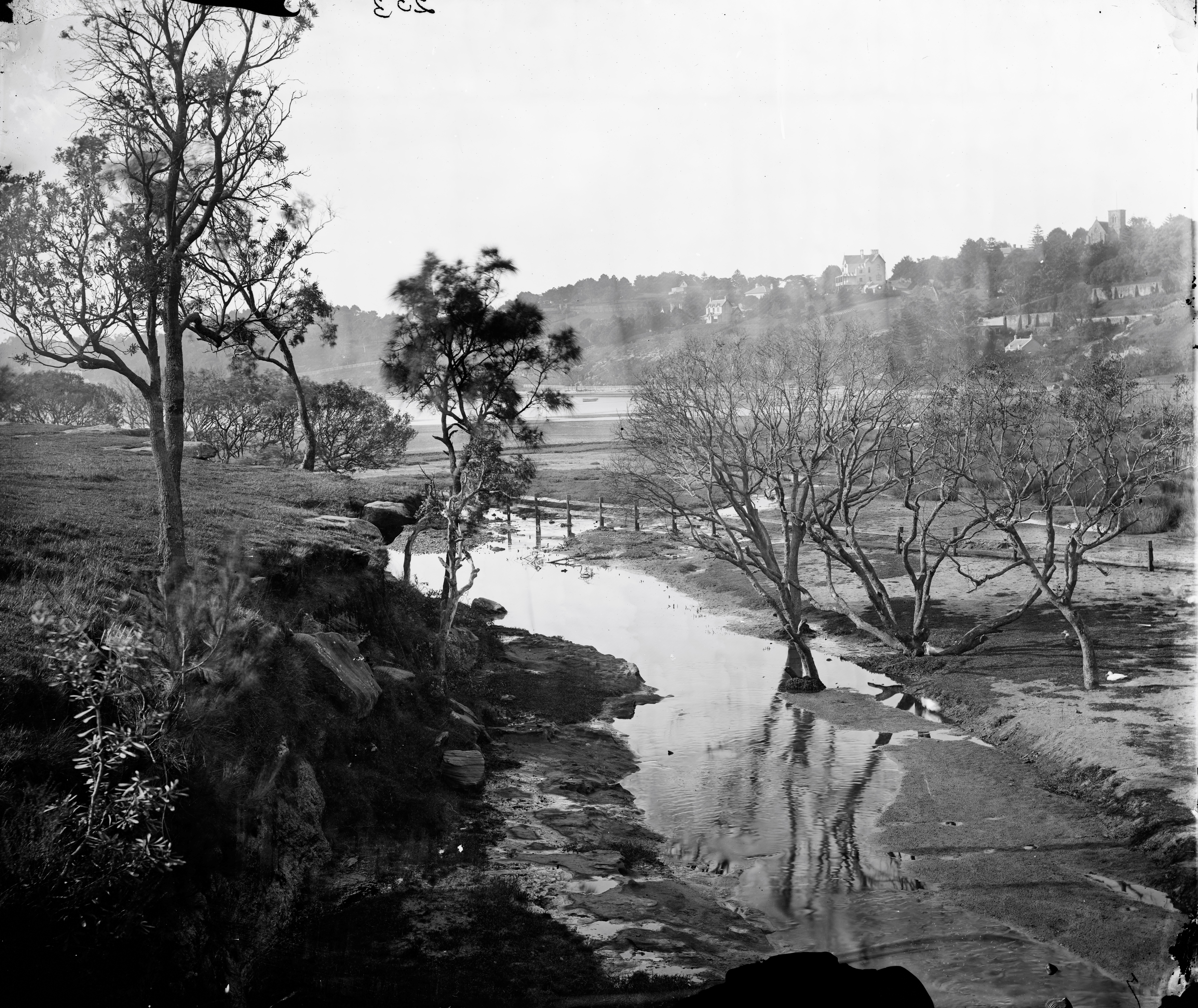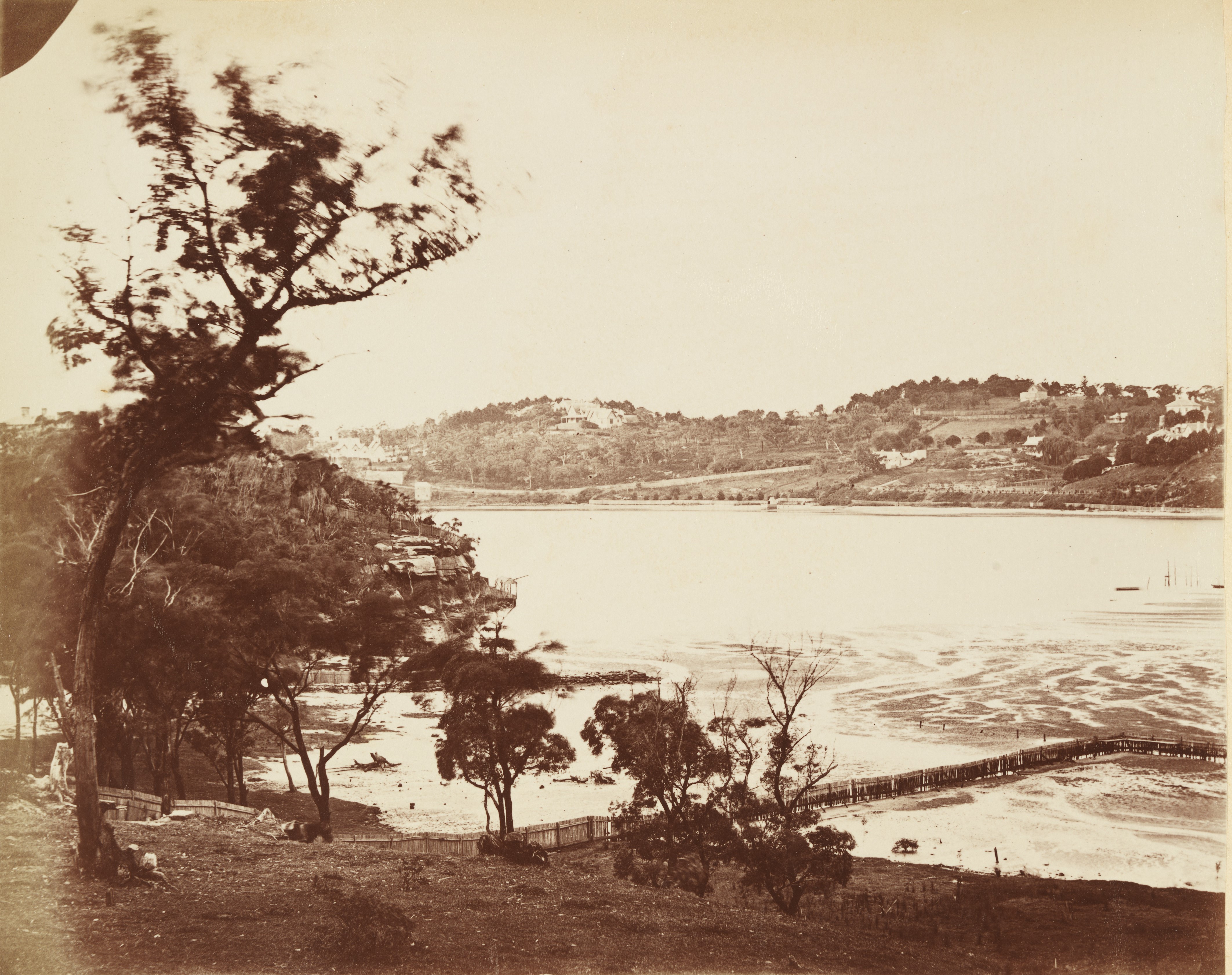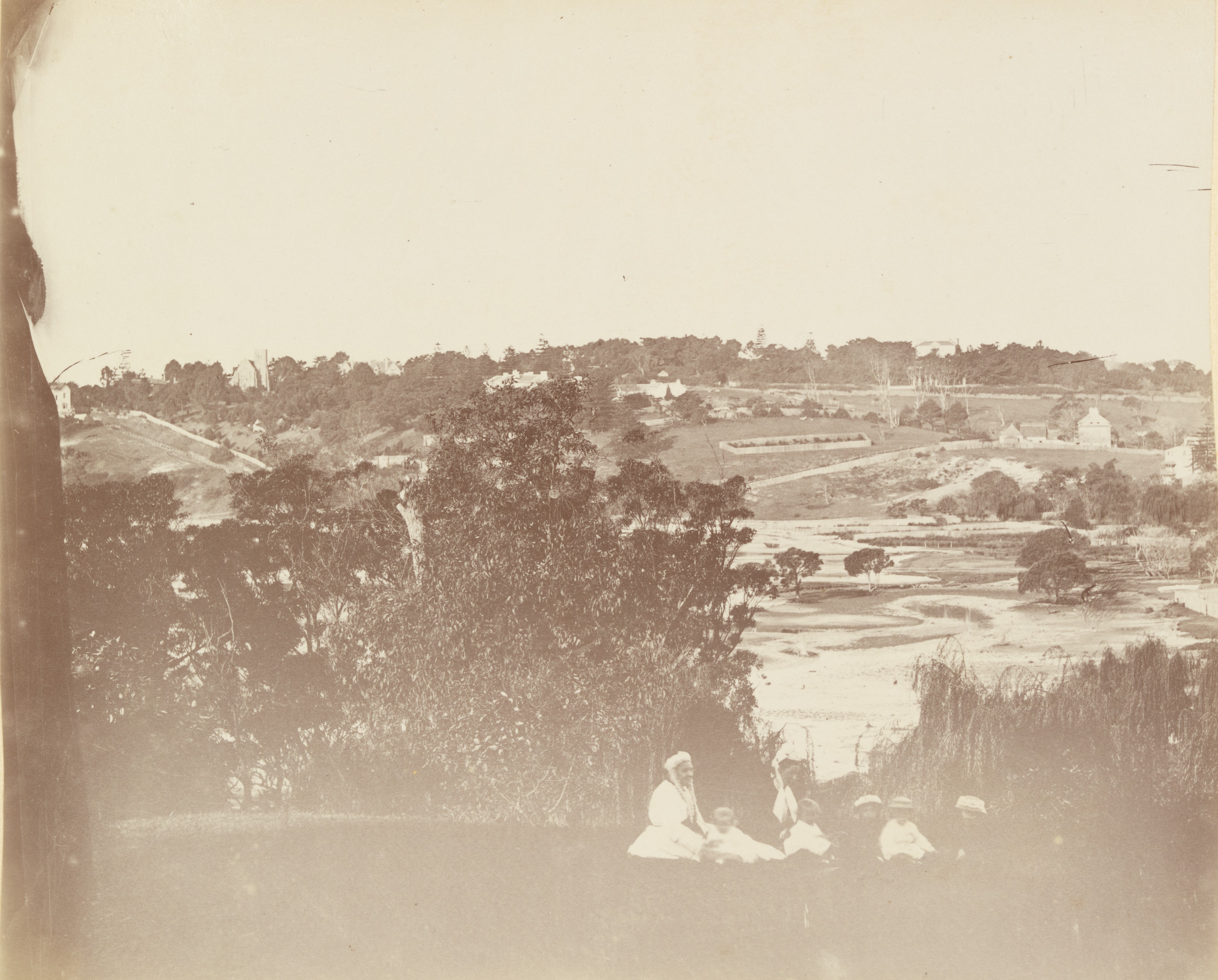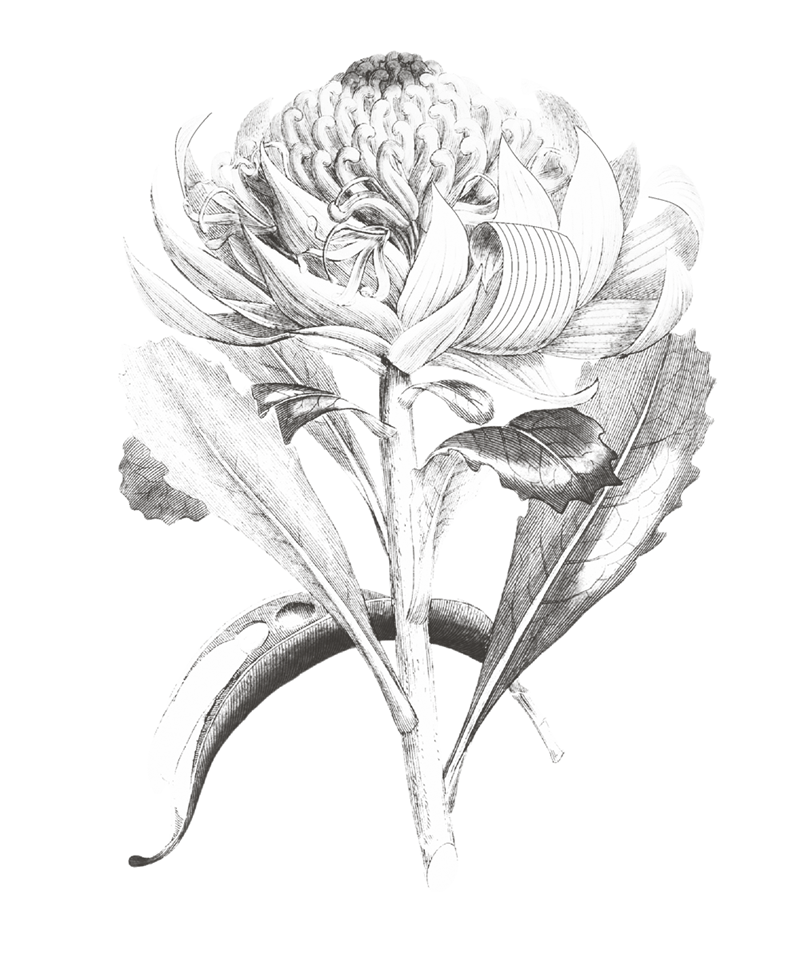
Rushcutters Bay and Creek, 1870-75
Looking from creek in Rushcutters Bay (later in the Park) to Darling Point with St. Mark’s Church (upper right), State Library of NSW, [ON 4/Box 56/no. 253]
In the 1810s Sydney Town began at Circular Quay and ended at Liverpool Street, and Darlinghurst was ‘little removed from the primeval forest’ with ‘out-in-the-country homesteads or farms.’ At least that’s how Obed West saw his hometown, growing up on the ground between Paddington, Darlinghurst and Rushcutters Bay on a stretch of land his family named Barcom Glen, known to the Gadigal people as Kogerah.
Publishing his recollections much later in the 1880s, West likened the city to a ‘healthy tree…vigorously spreading out its branches in every direction’; and it was the ‘trunk’ - ‘old Sydney’ - that he described in vivid detail.
Barcom Glen, also known as Westbush or West’s Bush, was traversed by a pristine creek which flowed into swamp area and discharged into Rushcutters Bay. Its reaches marked today’s boundary between the city and the municipality of Paddington. Fish and other aquatic life lived in and around the creek, but by the time West was writing, the once ‘pure’ waters were ‘dirty and miserable looking’. West compared it to the allegorical ‘Slough of Despond’ which ‘could not be crossed’.1

Rushcutters Bay, c1860s
[Views of Sydney and N.S.W], State Library of NSW, [DL PX 148/38]
Meanwhile writer, Arthur Dowling, later described the swamp area as follows:
Rushcutters’ Bay…was a very unsightly and unhealthy locality before it was reclaimed….When the tide was out the whole of the surface right up to the foreshore was exposed, and became one large swampy waste made up of muddy, dirty and unsightly sandbanks, interspersed with acquatic [sic] plants, particularly weeds and reeds….2
Journalist, Mary Salmon, wrote extensively about early Sydney and published an article about Barcom Glen Estate in 1908. In it, she claimed there was once an area of quicksand known as ‘Doctor’s Hole’ located at the ‘mouth of the creek’ in Rushcutters Bay. She also described the swamp area as a ’lonely locality’ and favourite haunt of highway robbers. In 1826, she wrote, two men were arrested after they allegedly used two pounds of sausages to cram down their victim’s throat while they rummaged for a purse and other valuables.3

Rushcutters Bay, 1866-75
[Views of Sydney and N.S.W], State Library of NSW, [DL PX 148/60]

Rushcutters Bay, 1866-75
[Views of Sydney and N.S.W], State Library of NSW, [DL PX 148/61]
However, Obed West’s recollections of his family’s estate were generally far more idyllic. Among the ‘dark and dense forest’ of ‘immense mahogany trees, blackbutt, and other eucalyptus species’ he described a group of cabbage palm trees with bases half a metre in diameter and stems which stood tall in the glen leading up to the family’s cottage.4
He wrote about the ‘aquatic birds of every description’ - ‘red bills, water hens, bitterns, quail, frequently all kinds of ducks, and, when in season, snipe and landrails, and at all times bronze-winged pigeons could be had in abundance.’ He also described hunting wallabies and dingoes in the swamp, and witnessing Aboriginal men climbing trees, hunting possums.5
He wrote:
In my early days (about 1810) Potts Point and Darlinghurst somewhat resembled the portion of the North Shore around Bradley’s Head as it now appears, the heights covered with timber and scrub, while the trees ran down to the water’s edge. Our wild flowers grew in profusion here, and I can remember spending many a pleasant sunny day gathering on these hills large bouquets of our native roses and glowing waratahs.6

'The most magnificent plant...is...the Waratah'
Zoology and botany of New Holland and the isles adjacent, J E Smith, J Sowerby, 1793, State Library of NSW, plate 7, page 19, Q79/59
Read the next part of the story.
Obed West, ‘Old and New Sydney’, Sydney Morning Herald, 12 October 1882, 9, http://nla.gov.au/nla.news-article13522182 and Obed West, ‘Old and New Sydney’, Sydney Morning Herald, 7 February 1883, 5, http://nla.gov.au/nla.news-article13527708 ↩︎
Arthur Dowling, ‘Some Recollections of the New South Head Road and Woollahra’, Journal and proceedings of the Royal Australian Historical Society, 1924, Vol 10, part 1, 47, http://nla.gov.au/nla.obj-606721653. ↩︎
Mary Salmon, ‘Historic Homes of N.S. Wales’, Sunday Times, 12 July 1908, 6, http://nla.gov.au/nla.news-article126741671. ↩︎
Edward West Marriott, ed. The Memoirs of Obed West: A Portrait of Early Sydney (Bowral, NSW: Barcom Press, 1988), 36. ↩︎
Obed West, ‘Old and New Sydney’, 9, http://nla.gov.au/nla.news-article13522182. ↩ ↩︎
Obed West, Reflections on Old Sydney and Colonial Days, edited by Janice Johnson (Camden, NSW: Janice Johnson, 2012), 7. ↩︎

